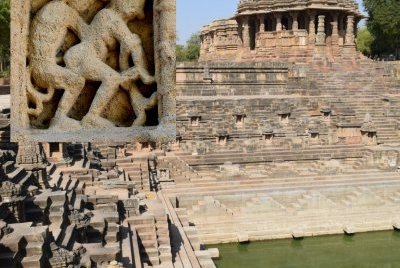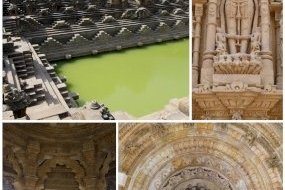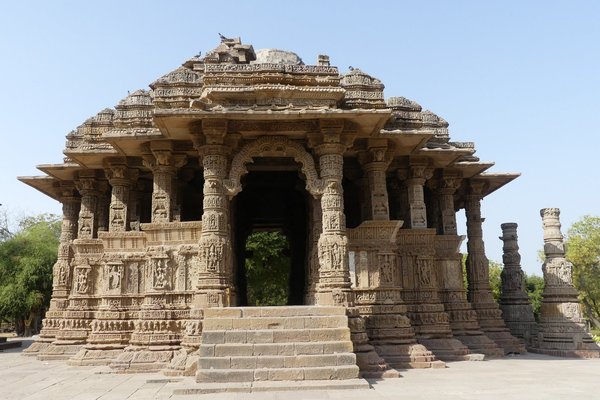India
Sun Temple, Modhera
Site Info
Official Information
- Full Name
- Sun Temple, Modhera and its adjoining monuments (ID: 6627)
- Country
- India
- Status
-
On tentative list 2022
Site history
History of Sun Temple, Modhera
- 2022: Added to Tentative List
- Added to tentative list
- Type
- Cultural
- Criteria
Links
- UNESCO
- whc.unesco.org
All Links
UNESCO.org
- whc.unesco.org — whc.unesco.org
Community Information
- Community Category
- Archaeological site: South (East) Asian
Travel Information
Recent Connections
News
No news.
Recent Visitors
- GerhardM
- Jana and Matt
- Priyaranjan Mohapatra
- Kurt Lauer
- Roman Bruehwiler
- Thomas van der Walt
- Carlo Sarion
Visitors of Sun Temple, Modhera
Community Reviews
Show full reviews
While I did enjoy more than two hours in Modhera on the way to Rani-Ki-Vav from Amdavad back in 2019, I'm not sure if I am able to grasp what could possibly bring this forward to a successful inscription. The objective to represent Maru Gujarat (Maru-gurjara) style makes one wonder if all styles ought to be represented in the list. This would mean an almost unfathomable well of prospects for India's tentative list, but it does not mean that all of them have to be pursued, let alone all of them deserving. Some architectural movements are more major and central than others. In terms of it being a sun temple, the one in Konark is difficult to beat especially for the relative quality of the extant carvings. To argue that its western counterpart should also get recognized in equal footing is a bit going too far. The route to have a serial Surya temple inscription may even be more feasible by making this site (11th century), and even Martand (8th century) in Kashmir, an extension to the already-listed Konark (13th century). As precedence, India demonstrated this successfully with the Great Living Chola Temples and the Mountain Railways of India.
The nomination talks of the tank being the only one to exist among the three Surya temples mentioned in the comparative analysis. How far, however, does this really take the nomination forward? It is a distinct detail and debatably one of the best in Gujarat, but it cannot be overstated. …
Keep reading 0 comments
Does the addition of the “Modhera Sun Temple” to its T List in Dec 22 represent a “return” by India to its many uninscribed "classical" religious/archaeological sites whose “aspiring World heritage” days one might have thought had somewhat passed in the ever broadening search for more outré, less well-covered subjects? Is it a bit like a European country now nominating yet another single-building Cathedral? I would characterize Modhera as “top of the second division” in its class with indisputable artistic and cultural credentials – even capable of aspiring to the Premier League. The unavoidable "comparator" is the other Indian Sun Temple at Konarak, inscribed as long ago as 1984. They are very different and I am sure there is room for both on the List, with Konarak undoubtedly being the more "impressive" to the "non-expert".
But extracting “value” from a visit to Modhera beyond just viewing a lot of “nice carvings” isn’t easy! We visited in Feb 2019 without any expectation that it would find its way onto the T List. If you are in Gujarat you would have to be very perverse not to take it in whatever its WH status! It is situated a 2hr drive north of Ahmedabad on a direct route to Rani ki Vav. only another 45 minutes further on. A visit will take around an hour – 2 at most if you want to dig deeper or relax. As with “similar” sites across India, a problem for the non-Hindu visitor is that the …
Keep reading 0 comments
